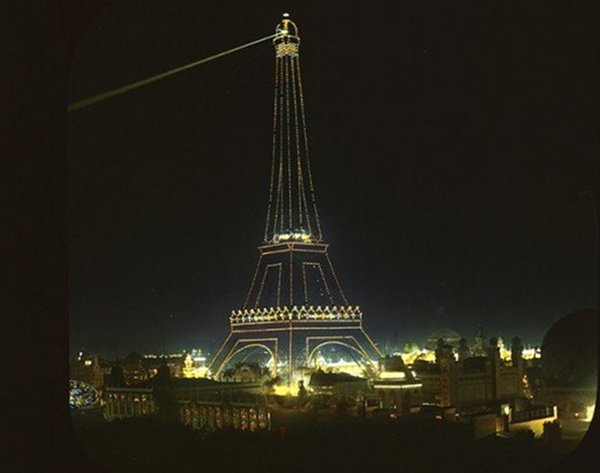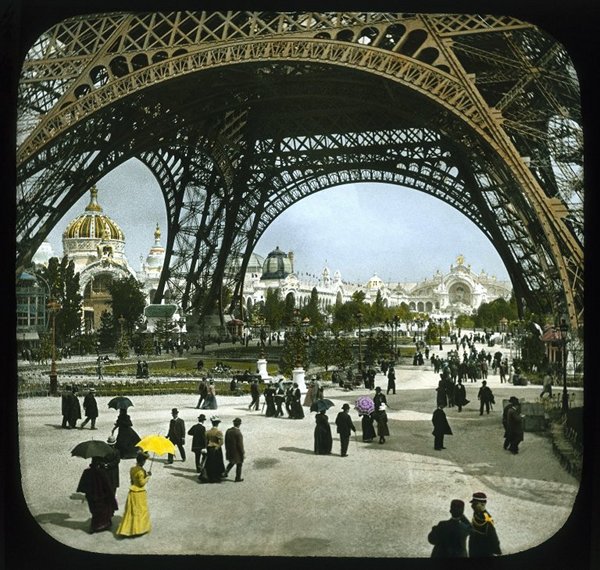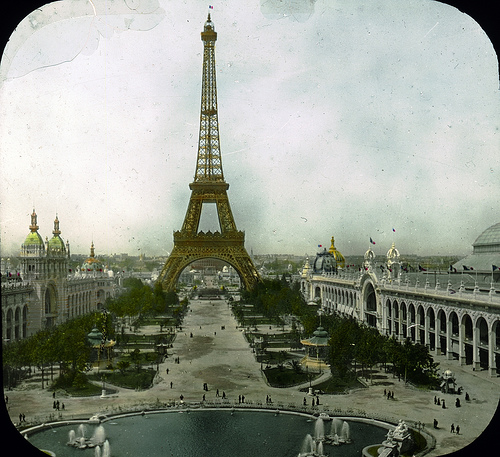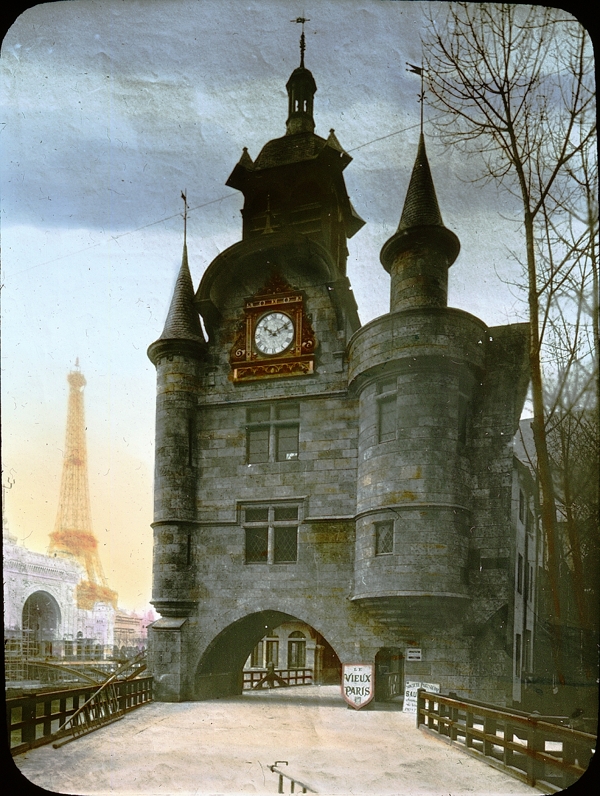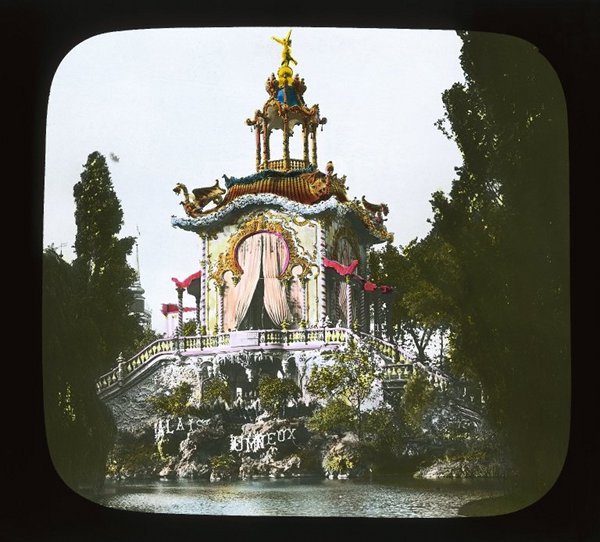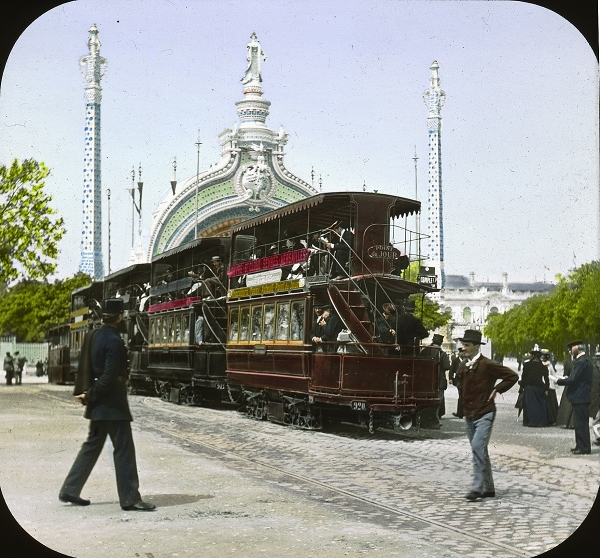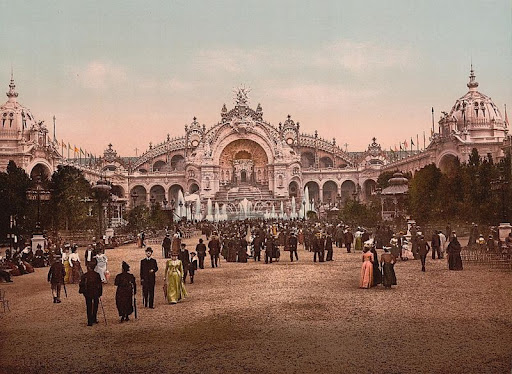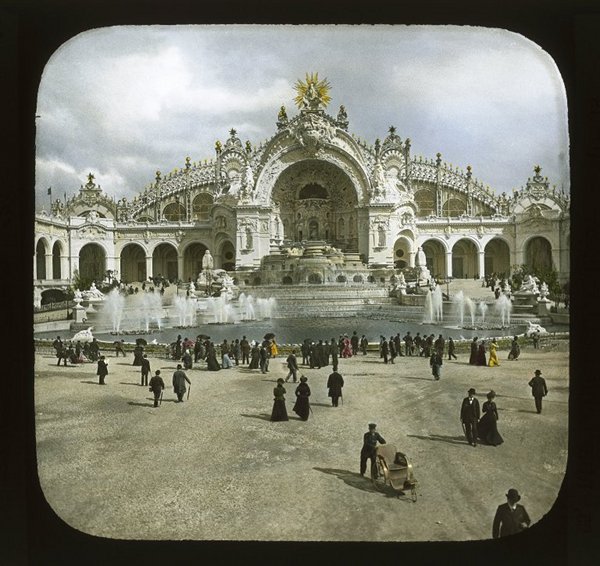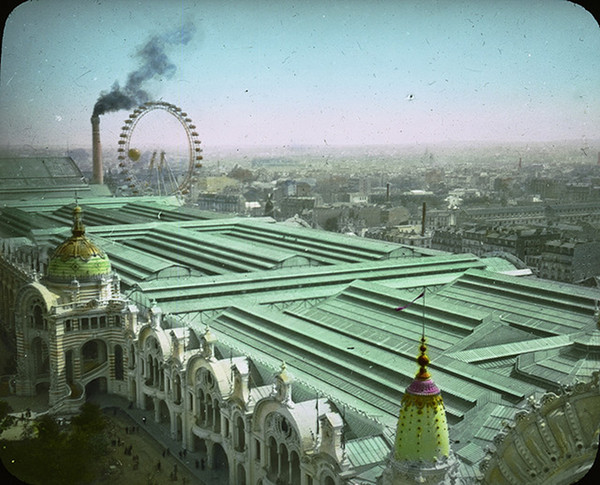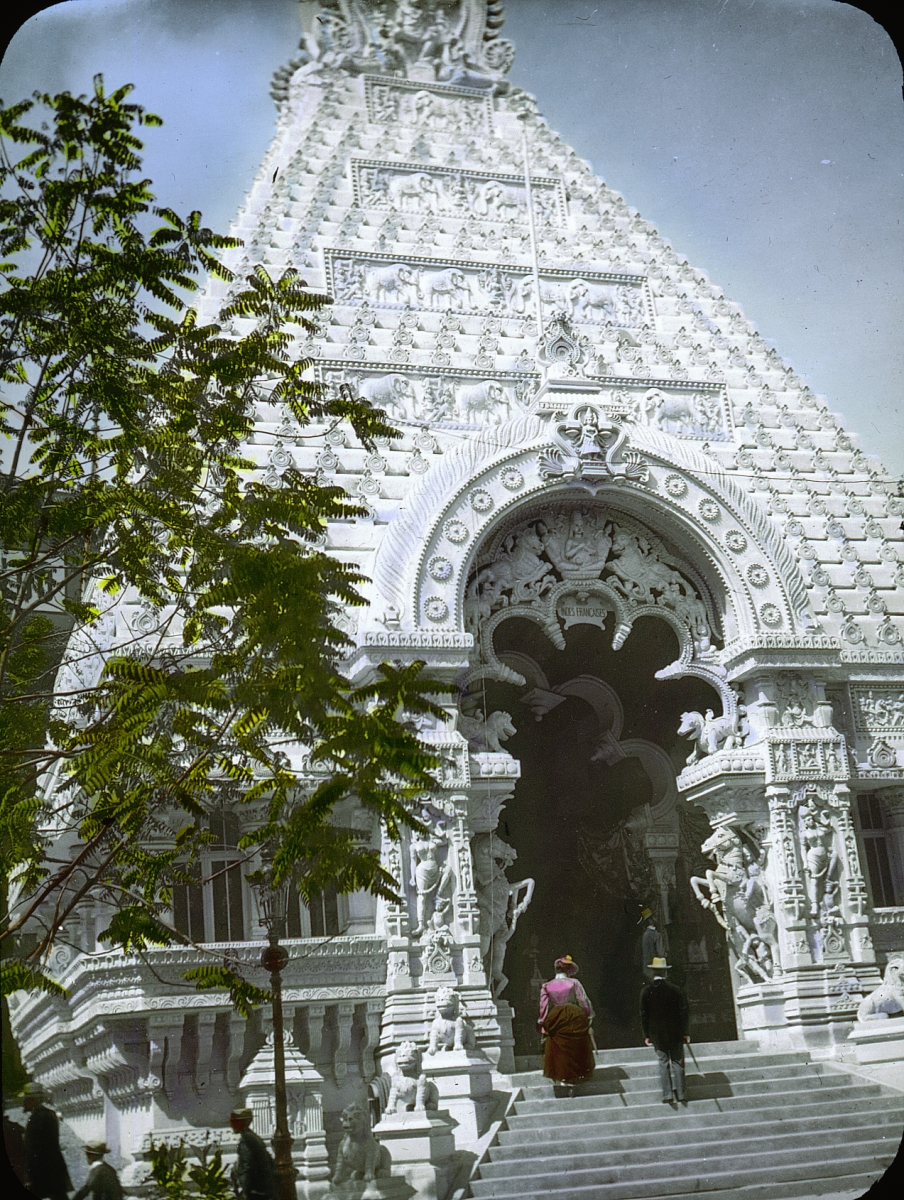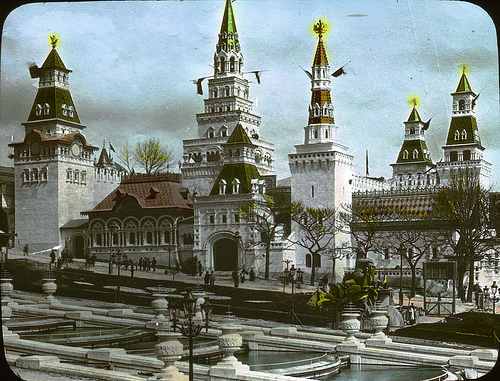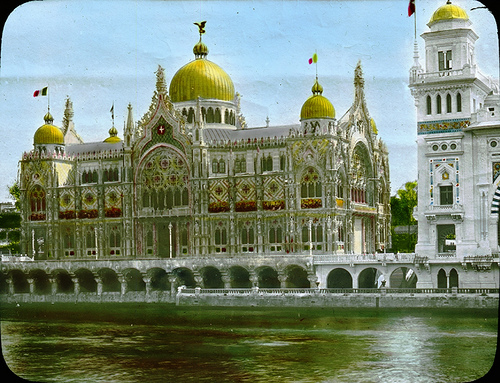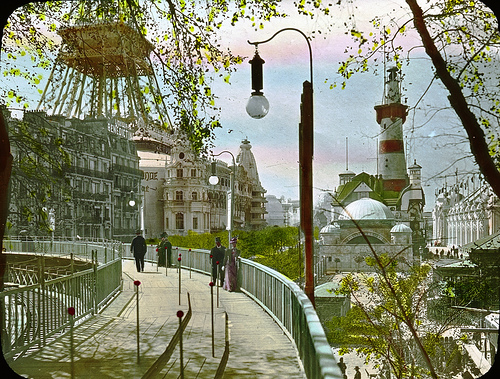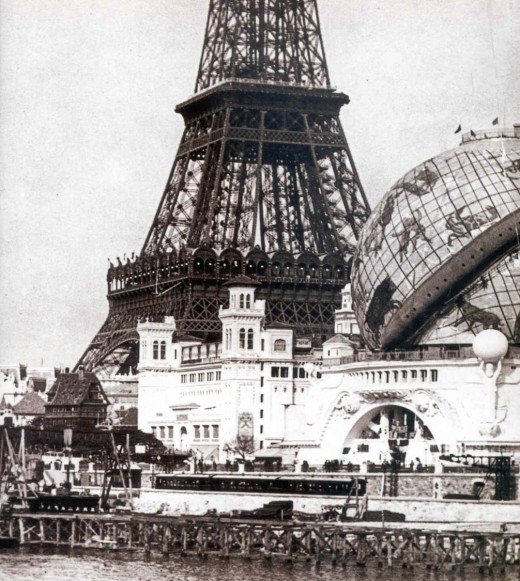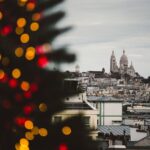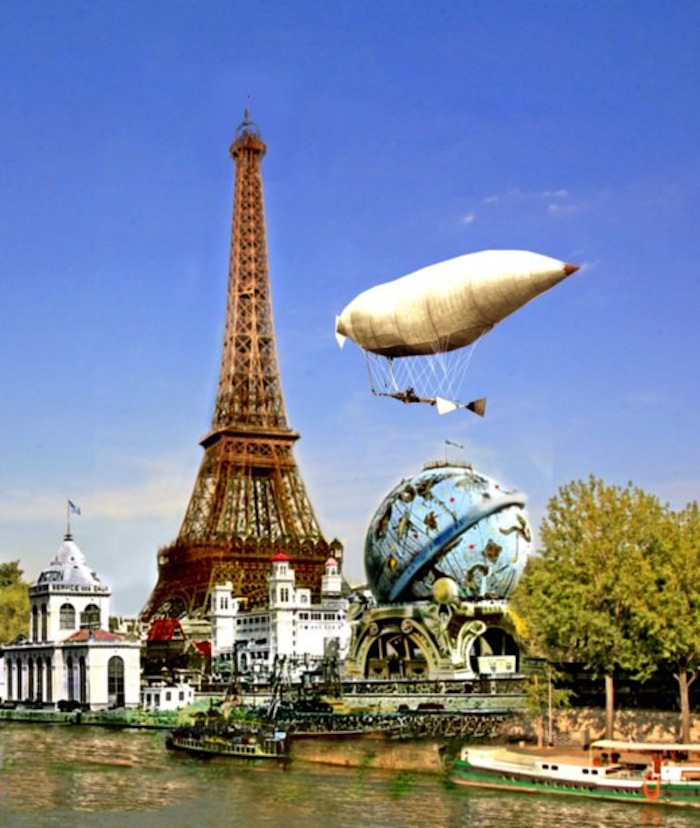
What you are looking at is not Disneyland Paris.
These are photographs colored by hand (a popular practice at the turn of the 20th century) of the Exposition Universelle in 1900 in Paris.
It was the fifth one to take place in the city and centered mainly on the revolutionary achievements in electrical technology at the time.
If you were lucky enough to have a ticket to the exposition, you were met with a ‘dazzling profusion of electric lighting—in the pavilions and the Palais de l’Électricité and all the way up the Eiffel Tower. Outside the fairgrounds, the new lights illuminated the city’s monuments and the central boulevards,’ remembers the writer Charles Rearick of Paris Dreams, Paris Memories.
It was indeed this very Exposition Universelle that earnt Paris it’s title of ‘the city of light‘.
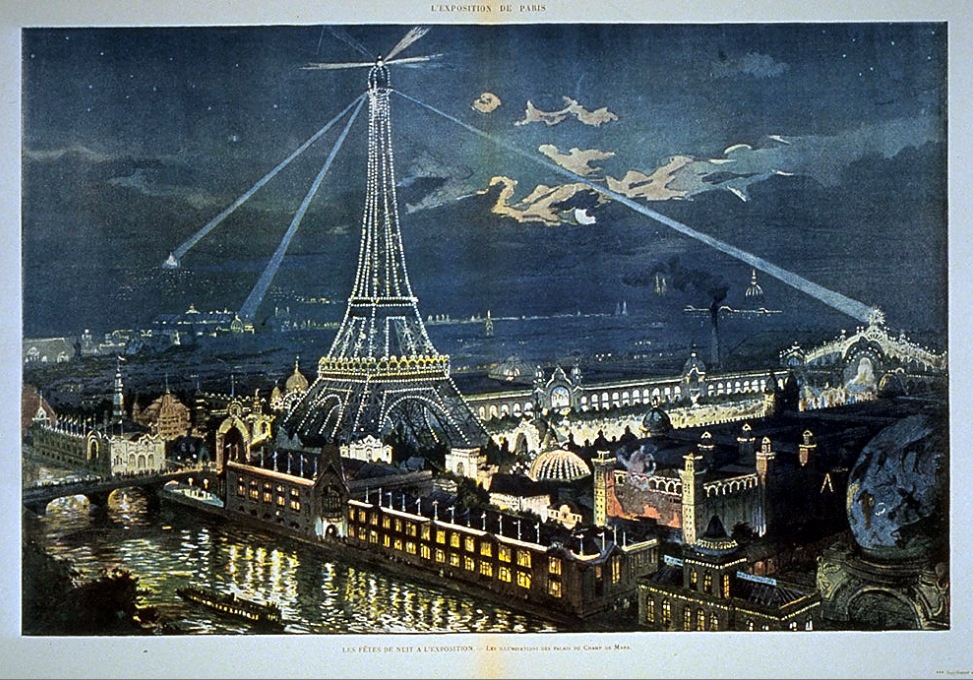
At the same time, Paris was even hosting the Olympics games, the first to take place outside of Greece, giving the fair an even larger dimension. More buildings and pavilions than ever were constructed, including the Grand Palais and the Petit Palais. The Eiffel Tower was also painted yellow for the occasion.
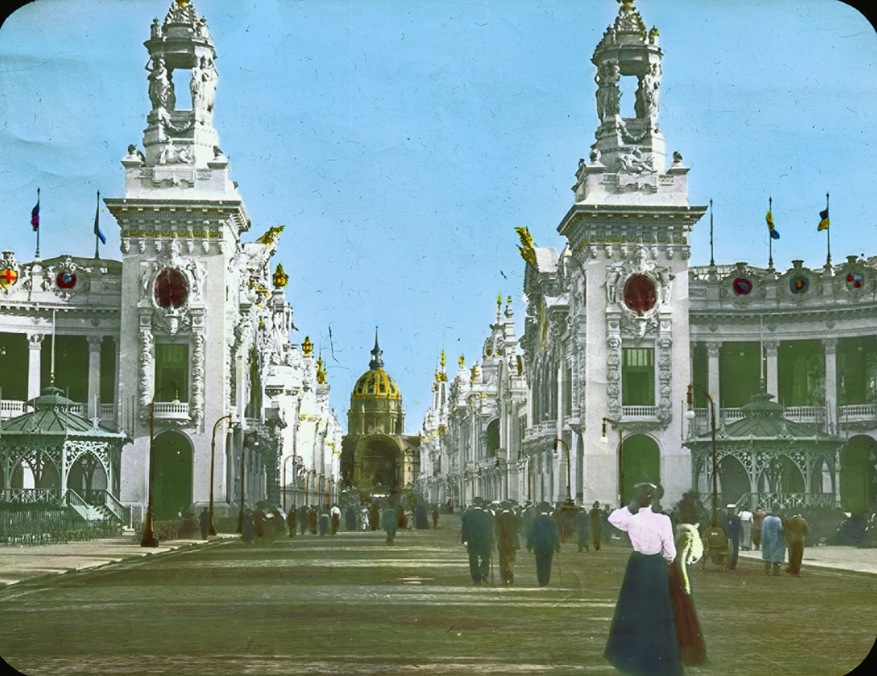
Above: Where many Parisians today picnic on the lawns of the Invalides, entire buildings were temporarily erected all the way up to the river.
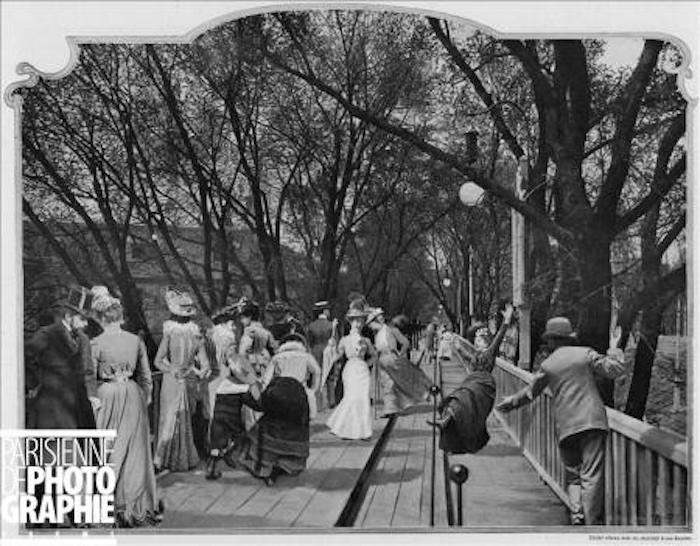
Pictured above is a photograph of le trottoir roulant, the two mile-long moving sidewalk, which was one of the most famous marvels at the Universal Exposition of 1900 (obviously people hadn’t yet got the hang of it). It was a three-lane sidewalk, with one lane stationary, the second moving at 2.5 miles per hour, and the third at five miles per hour.
Behind this tram, you can see a structure sticking out which was the “porte monumentale” (monumental gate), located on the Place de la Concorde, at the Eastern entrance of the Fair.
Then there was the Palais d’Electricité, an enormous and impressive building in the style of Louis XV which was entirely lit and decorated with electrical bulbs. At night, it lit up magnificently from the other end of the Champ de Mars.
Video footage of the Palais d’Electricité from 1900:
[youtube http://www.youtube.com/watch?v=oJffJgjdero]
But you may have noticed that you don’t recognize most of these monuments and buildings…
What is most shocking about these photographs of the Exposition Universelle is the fact that most of the enormous structures we’re seeing no longer exist; as if they just vanished into thin air.
As beautiful and grand and permanent as they all looked however, they were never meant to be permanent. The exceptions spared were the Grand Palais and the Petit Palais which today still serve as exposition spaces.
Many of the buildings and statues of the world’s fair were made of staff, a low-cost temporary building material invented in Paris in 1876, which consisted of jute fiber, plaster of Paris, and cement. Often the temporary buildings were built on a framework of wood, and covered with staff, which was formed into columns, statuary, walls, stairs, etc. After the fair was over, the buildings were demolished and and all items and materials that could be salvaged and sold were “recycled”.

Still, it seems like an awful lot of work only to be eventually torn down like a circus tent. The world’s fair only lasted several months from April until November and planning took 8 years. In an era where construction equipment certainly wouldn’t have been as advanced as it is today, it’s quite amazing what they strove to achieve and even more amazing that they went and tore it all down afterwards.
Above: The Italian Pavillion, located on the Eastern portion of the Quai des Nations
Above: the moving sidewalk gave spectators a tour of the major sites and pavilions.
Below: An enormous globe called La Grand Globe Celeste was built on the banks of the Seine close to the Champs de Mars. The Grand Globe Céleste was 50 meters in diameter with attractions including a restaurant and an exhibition space in the interior showing planetary orbits and maps of the stars.
Alas, the 1900 World’s Fair was not exactly a financial success. It had been grandest Paris World Fair organized so far– with a ticket price to match. Fewer people attended it than the organizers had hoped and the city did not benefit financially from the fair.
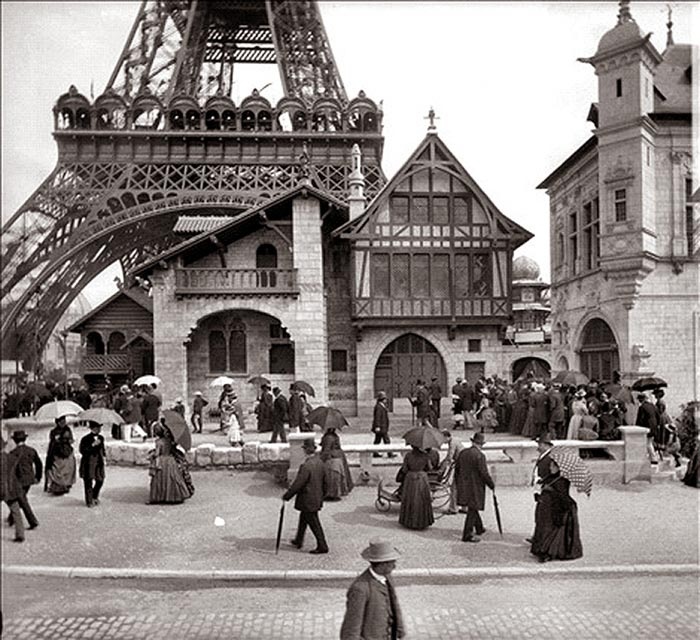
The opening of the Eiffel Tower during the 1889 World’s Fair
It would be the last time Paris would host the epic Exposition Universelle that had given birth to the Eiffel Tower until forty years later, by which time the spirit and enthusiasm of world fairs had vanished.
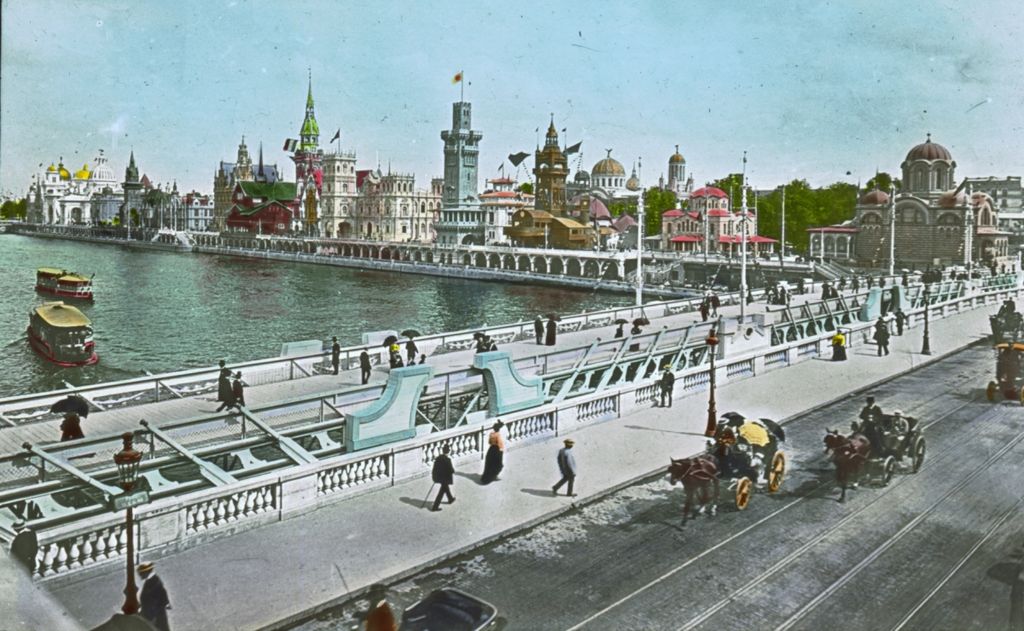
Take a trip down memory lane with this rare footage by Thomas Edison:
Photographs by Joseph Hawkes thanks to the Brooklyn Museum


